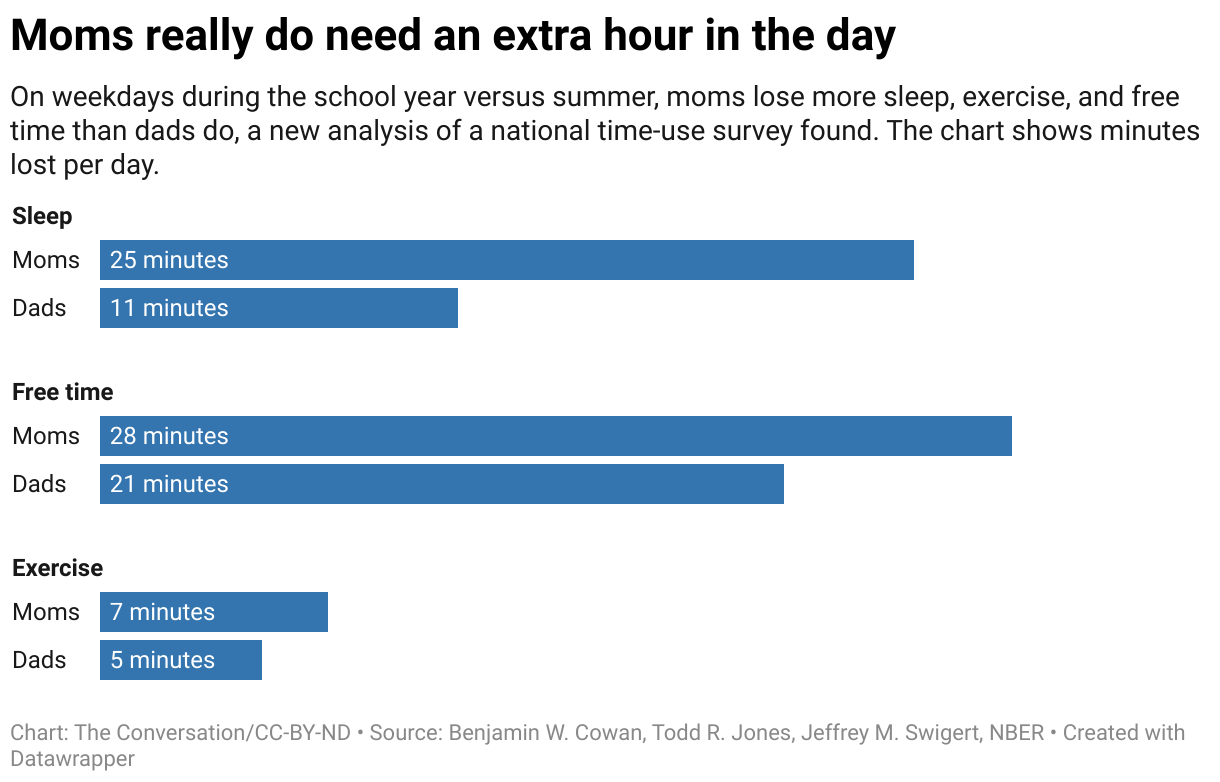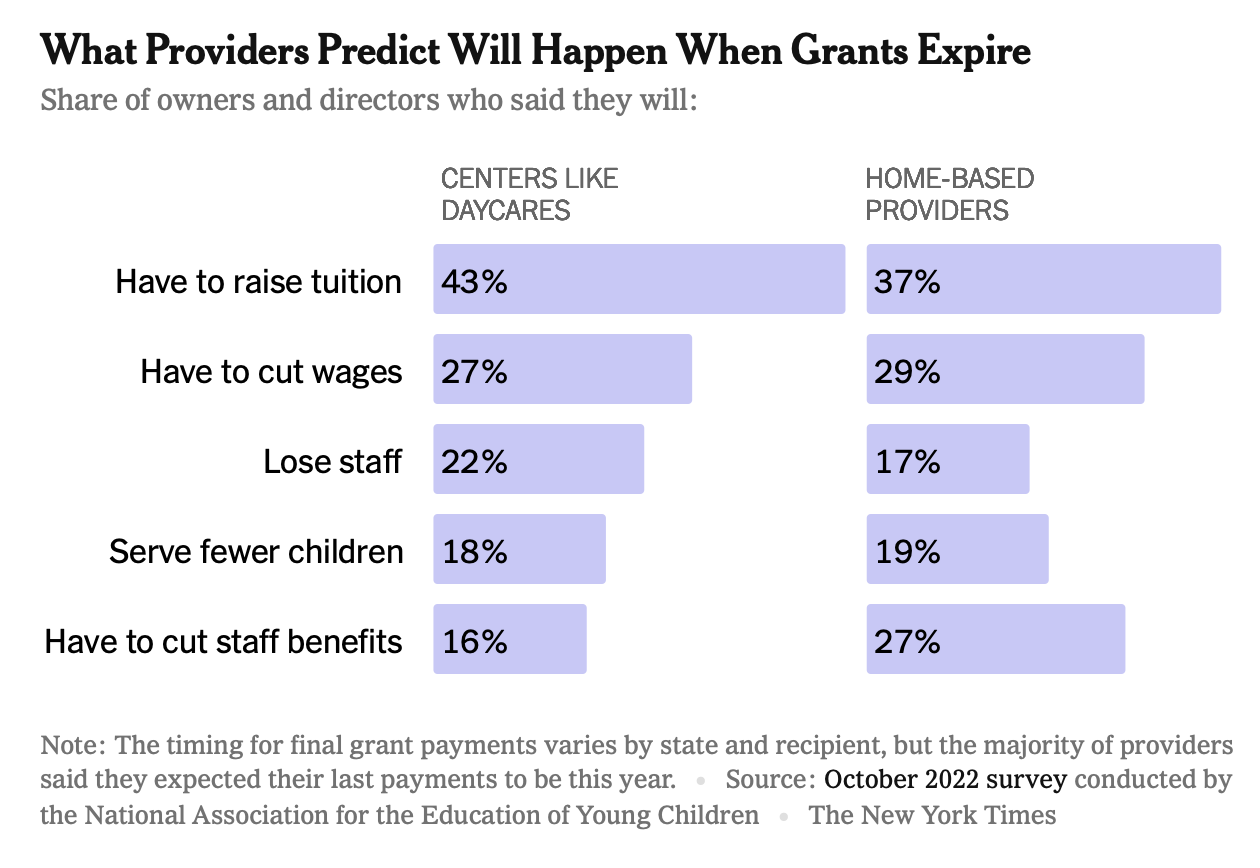
Summer was busy, but the kind of busy that involved planning outdoor adventures and the making of fun, sun kissed memories. The to-do lists of fall are a different animal: the logistics and admin tasks increase, but it’s mostly for the everyday life stuff without the reward of campsite s’mores or swims in the lake. As I write this I’m taking a break from researching and scheduling the activities our kids will do after school this year. The aftercare programs associated with our school are all full with long waitlists. With school recesses cut so short these days, it’s also up to us to make sure they get physical activity outside of school.
Moms tend to manage the mental and physical load of all things school-related: purchasing supplies; shopping for and packing lunches (without a growing list of prohibited allergens); checking/sorting/buying clothes; fielding school emails and adding the various back to school events, conferences, and activities to the calendar; managing birthday invites and playdates; helping with homework; signing up for all the things, and on and on. Today, the Monday before the first day of school, I’ve received two emails from school administration with action items (forms) and a call from a teacher to schedule a conference. Dad got both the emails, but I got the call - because if there’s a mom on the contact list, that’s who gets called.
In the feminist mom ecosystem, this domestic work that happens before, (during) and after paid work is also known as the Second Shift - those of us with parents and siblings to look out for are trying to squeeze in 3rd and 4th shifts. Moms all know that we do more of this household/reproductive labor and that it impacts our free time, we talk about it with each other, and some economists just shared data to confirm it.
The Fair Play Policy Institute summarizes recent findings from an analysis of the American Time Use Survey:
“Though it may seem like the start of the school year means more time for parents to focus on themselves… parents sleep less, have less leisure time, and spend less time exercising while school is in session than they did during the summer months.
Another overarching pattern? Moms lose more time than dads when the school bell starts ringing - and spend more extra time "actively engaging" with their littles, i.e. adding cards like "Homework, Projects & School Supplies" to their decks. While the average American mom allocates about 34 minutes to these activities each weekday, the average dad sets aside about 12 minutes a day.”
The double shift of paid and unpaid work is broadly unsustainable and unhealthy for mothers. Last week I wrote about the absence of paid parental leave in the US. So many aspects of how policies are designed and cultural practices are still completely based on the one (male) earner and one (female) carer household “ideal.” For example, even the the normalization of spousal benefits in the workplace while we’re still fighting for paid parental leave and affordable childcare for employees themselves reinforces and potentially incentivizes the male breadwinner “ideal.” Of course this arrangement doesn’t reflect the reality that most mothers do work, and it in no way squares with the current cost of living and raising kids in most places. More on that below…
School PTAs are a fascinating embodiment of the gendered expectations around reproductive labor
I’ve recently started attending my kids’ school Parent Teacher Association (PTA) meetings. It probably shouldn’t shock me, but every time it does: in a room full of anywhere from 15-20 parents, there might be one dad, if any. The PTA members at our current school are generally wonderful, giving moms who care deeply about improving schools for their children, and schools would greatly suffer without this unpaid labor of the PTA.1 But just like unpaid care work in the home, the vast majority of school volunteer work is performed by women. Not a shock in theory - the national PTA was founded in 1897 as “the National Congress of Mothers.” But 126 years later, sitting in these meetings feels like a bit of a feminist gut-punch. I find myself wondering “how is this not problematic to anyone else? Is this really where we’re at in 2023?” But it isn’t beyond me that I’m the mom in our family, and I’m here too.
It’s not just men who are missing from the PTA meetings. At my kids’ public school where the majority is students are children of color and/or qualify for free lunch, the PTA is made up of mostly white, wealthy moms. They are incredibly well-intentioned, the ones who send their kids to the title 1 school and work hard to invest in the community instead of going private like many of their neighbors, and who are actively working to encourage more diversity in the PTA. But having time to give this free labor - and have a little power and inside status among those who educate your children - is also much more accessible to those families with economic privilege. The PTA stereotype and satire out there - cliquy moms who think they are powerful because they hold bake sales - probably doesn’t help.
I do think that moms like to have an excuse to leave the house for social time with other moms, sometimes involving food and wine, and often meaning we get to leave dad to deal with bedtime (although the most inclusive meetings allow children in order to make them accessible to single parents). But those social gatherings come with a price: you often walk away with several hours of volunteer work added to your already-full mental and physical load. I also think that, given that we are used to managing so much of the child and school-related activities, we feel like it makes the most sense to be the ones weighing in on the issues that need attention, and taking charge to change them. We have the most skin in the game. Moms also tend to talk and network with each other, encouraging PTA involvement and initiating friendships. Despite Alex doing his share of drop offs and pickups, I’ve gotten to know many more moms and tend to hear the intel and gossip with little effort.
I’ve heard the argument that the mom culture of PTAs is not welcoming to dads. I get it - though women have to overcome that feeling walking into much-less-friendly boardrooms and courtrooms and so many other rooms all the time. Equally important may be that men don’t get the same social pressure and guilt that moms do to volunteer and generally be perceived as “a parent who doesn’t work, and a worker who doesn’t parent.” Again, social norms and structures reinforce and further the “second shift” for moms at every turn. It’s not just women who would benefit from a greater gender balance when it comes to family participation in schools; research shows that children perform better when their fathers are actively involved at school.
Do you participate in the PTA at your kids’ school? Is this your experience? What do you think would encourage more PTA gender and socio-eonomic diversity? And would this help shift dynamics in terms of division of school-related labor more broadly?
A Looming Fall Deadline for Caregiving Policy
In my decade of parenting, I’ve had many moments of childcare stress trying to find a nanny or center with availability, with a schedule that works with ours, and a price and location that fits within our budget and timeframe. Then there are the acute crises that arise when your nanny texts you while you’re on vacation to tell you she is quitting, your new au pair becomes cripplingly homesick shortly after she arrives, or you walk into daycare to find it so understaffed that those working are completely frazzled and ready to quit too. We’ve had 3 au pairs, I’m guessing at least 12 nannies/babysitters and been enrolled in I think 8 childcare centers. It feels like we are always patching together the bare minimum of coverage. I’m sure many parents can relate.
In the current state, a mother’s only lifeline - particularly one who is working outside of the home and/or caring for parents or siblings as well - is access to childcare. And access means many things: availability, geographic proximity, affordability, and acceptability (this last category includes things like cultural/language and quality of care). We need to resolve this fragile dependence on something that could crumble beneath us at any moment, but that’s a long game that involves bigger cultural shifts, like a gender-equitable division of childcare. Currently, outsourcing care IS our short term option. And the cost of childcare has skyrocketed post-pandemic, while the supply has plummeted. The cost has increased at double the pace of inflation, in fact, and it’s about to get worse if the childcare subsidies under the American Rescue Plan, set to expire in September, are not extended.
The American Rescue Plan provided $24 billion for stabilization to childcare providers who were greatly impacted across the board by COVID-19. It kept many of them from closing. The Century Foundation estimates that 3.2 Million children will lose childcare spots and that over 200,000 childcare providers could loses their jobs if this policy expires.
Why is childcare subsidy needed? Well, at the most basic levels, childcare is unaffordable to many families and yet pays too little to attract quality providers. Post-pandemic, all types of care jobs are seen as less desirable given the increased risks, from both safety and job security standpoints. Local Seattle company Nanny Parent Connection does annual surveys to track the costs of in home childcare. When I complete the pay rate calculator on the site, I’m told that I should expect to pay $30-$33 per hour for a professional, full time nanny, or $33-37 per hour if I plan to ask the nanny to complete other household tasks beyond childcare. Annually, this works out to about $68k before adding in expected benefits such as health stipend and paid leave. For a childcare center - assuming you can find a spot - the average annual cost per child in Washington state is $14,355 - though I can tell you that it is much higher in Seattle. For comparison, annual tuition at the University of Washington is $11,524. Even once a child is in public school, you’re dishing out a minimum of $1200/month per child for summer camps. Yet, the median wage for a preschool teacher in Seattle is between $38-48k, which is a tough salary to live on in Seattle (especially with kids).
So even with the existing subsidies, childcare providers are barely able to live in the cities where they work, and parents (usually moms) aren’t able to work unless they make double that of the childcare providers themselves. More women opt out of the paid workforce. Childcare is already tough for both parents and professionals in the industry, and the expiration of the post-pandemic recovery subsidy for childcare is predicted to make it much harder. There is hope that the Biden administration will extend the American Rescue Plan childcare funding to stave off this “childcare cliff.” Very curious to see what will happen by September 30th.
Elder care a whole other can of worms. I learned a lot about that the hard way - the topic of a future newsletter for sure.
A final thought
In thinking about all of the formal and informal structures that make caregiving overall so gender normative, I like what I read from Emily Kenway this week, in which she suggests we could “use the concept of nonbiarany gender as a political lens through which we can view a new kind of care approach.” She describes a paradigm that falls between the two existing, but flawed, proposed solutions: The “universal breadwinner” (making women more like men, freed from domestic responsibilities through childcare and other tools) and “caregiver parity” (women provide care in the home but are paid for it). A third approach coined by philosophy professor Nancy Fraser is the “universal caregiver,” in which “men are induced to become more like most women are now and make women’s current life patterns the norm - that is, a duet of work and care.”
📚 Reads
Childcare disruptions expected as record funding nears an end
***
I’ve focused a lot on the mothering part of the caregiving experience and related policies the last couple of weeks. Next week I’ll get into some of the more emotional aspects of non-parental caregiving. As always, I’d love to hear your comments below, and feel free to share this newsletter with anyone who might like it. Thanks for being here.
The fact that US schools are so dependent upon PTAs is a problem in and of itself. Public schools are chronically underfunded, informally transferring some of the responsibility to families. PTAs for schools serving wealthier families already at an advantage fundraise significantly more than lower income schools, widening the economic gap between them. Some wealthy Seattle public schools fund entire staff and admin positions and fancy technology, while lower income schools with higher English learner populations are left even more under-staffed and underfunded.










Oooh, time use surveys are my nerdiest corner of census data! There are two trends that especially fascinate me. One is how the amount of time that mothers and fathers spend with their children has doubled since 1965 in the US and most European countries even as workforce participation rates have gone up. (The one exception is France, where mothers now spend much less time with their children and fathers spend significantly more time.) But my favorite part of time use data is when researchers ask the survey respondents how enjoyable they find each of the different activities in the day. “Play with children, childcare, and teaching children” are always near the “most enjoyable” end of the chart — far higher than “shopping” or “traveling.” (I’m mindful that many of the least enjoyable activities are also related to children: washing dishes, laundry.) This is especially true for men, who rate “playing with children” as more enjoyable than women (probably because they tend to do less of it!). https://ourworldindata.org/time-use
What does this have to do with the topic of your newsletter? I’m dying to convince my friends who are parents to send me a text message when they want me to play with their kids. Much like Seattle, there are waiting lists for camps and kids activities in the Bay Area too. So I tell them to text me anytime, and I’ll swing by and play some soccer or hide-and-seek (or water balloons!) or whatever with their kids. I genuinely find it fun to play with kids (like most respondents of the time use survey). I’ve even offered to make it a weekly thing — like I’ll swing by every Sunday morning to pick them up and take them to the park. But no matter how much I offer or try to convince, they just won’t take me up on it.
I think you’d enjoy this week’s Death, Sex & Money with Ezra Klein where he and Anna Sale discuss how hard it is to ask for help when it comes to parenting and care work. https://www.wnycstudios.org/podcasts/deathsexmoney/episodes/ezra-klein-death-sex-money
Finally, if you and Alex are willing to share, I’m curious why you’re the one to go to the PTA meeting. I’m also curious if you and the other PTA members have discussed what could be done to recruit more dads to the group? Often I find that a simple pro-active invitation and request that they help shape the agenda can go a long ways.
Feeling this so SO hard. Thank you, Anna.